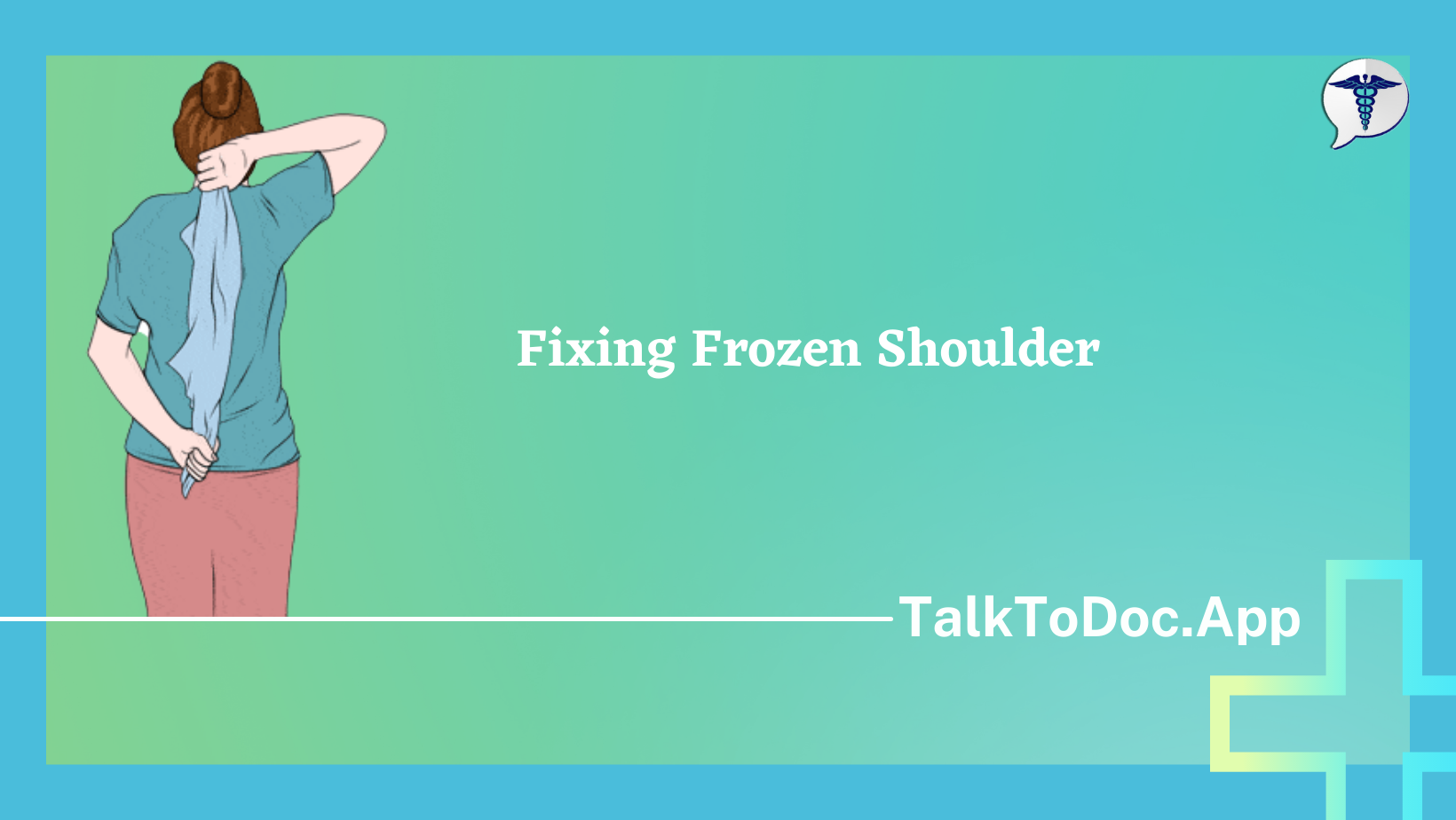Fixing Frozen Shoulder
The bones, ligaments and tendons that make up your shoulder joint are encased in a capsule of connective tissue. Frozen shoulder occurs when this capsule thickens and tightens around the shoulder joint, restricting its movement. A condition characterized by stiffness and pain, It is periarteritis.
30% is bilateral.
Signs and symptoms:
People 40 and older, particularly women, are more likely to have frozen shoulder.
-Pain and restriction of all movements of the shoulder(Global stiffness).
-External rotation is the first movement affected followed by abduction, internal rotation and flexion whereas extension is relatively free.
Associated conditions:
Diabetes mellitus
hyperlipidemia
cardiac problems
hypothyroidism
hyperthyroidism
hemiplegia
Tuberculosis
Parkinson’s disease
Following injury or surgery to the shoulder.
Stages:
- Freezing stage:
Increasing pain at night - Frozen stage:
Increasing stiffness, decrease range of motion and pain - Thawing stage:
Decrease in pain and stiffness and increase in range of motion
Diagnosis:
–Mainly clinical,In most cases, health care providers can tell when a person has frozen shoulder based on the results of the physical exam. Still, in some cases, it’s hard to tell the difference between frozen shoulder and other shoulder problems, such as a painful or torn rotator cuff. If your health care provider is uncertain about your diagnosis, he or she might refer you to an orthopedist or physiatrist (Physiatrists typically focus on treating the joints, muscles, bones, nerves, tendons, and ligaments using non-surgical treatments, such as injections, pain medications, braces, and more. They also prescribe various types of therapies for patients, such as physical therapy.)
-Injection test — An injection test can help determine whether a person has frozen shoulder or another shoulder condition. The test involves injecting the person’s shoulder with an anesthetic. In people with frozen shoulder, an injection test will NOT improve mobility, whereas in people with other shoulder problems, it usually does.
–Imaging: Patient with suspected frozen shoulder very rarely need imaging tests such as x-rays, magnetic resonance images (MRIs), or ultrasounds. Still, health care providers do sometimes order them to make sure other problems are not causing the symptoms.
Treatment:
In most cases, frozen shoulder gets better on its own, even without treatment. However, there are cases in which people never regain the full range of motion they had before.There are a few treatment options for frozen shoulder, which can be combined, but there’s no obvious course of action that is right for everyone.
Treatment options include physical therapy, medications to manage pain and inflammation, and – in extreme cases – surgery.If you are being treated for frozen shoulder, remember that recovery can be a slow process and that you need to give treatment time to work.
-Analgesics: paracetamol, ibuprofen, to manage pain.
-NSAIDs: Diclofenac, due to its anti inflammatory properties.
-Steroid injection: injected directly into the shoulder joint to avoid its side effects if used systemically by oral routes.
-Manipulation under anaesthesia(adhesiolysis)
-Arthroscopic surgery, indicated to loosen the joint capsule so that it can move more freely.
Prevention
One of the most common causes of frozen shoulder is the immobility that may result during recovery after surgery,If you’ve had an injury that makes it difficult to move your shoulder, talk to your doctor about exercises you can do to maintain the range of motion in your shoulder joint.

Nice Information Great Work